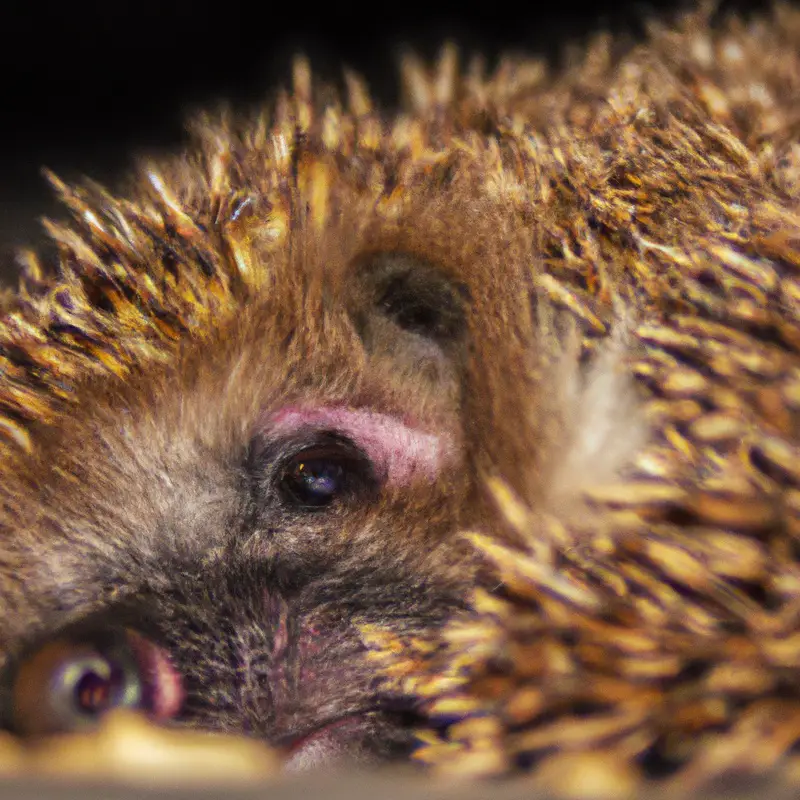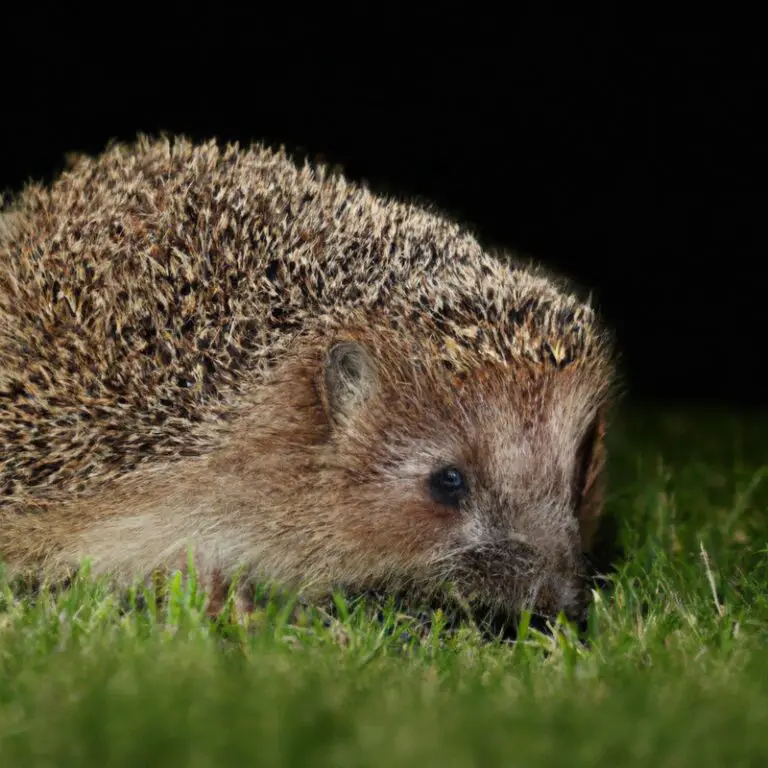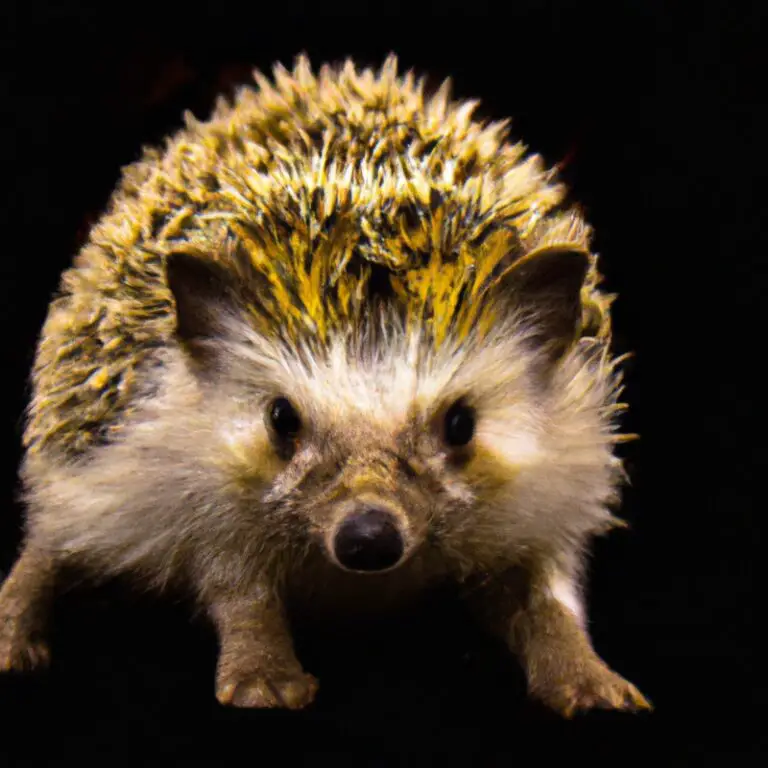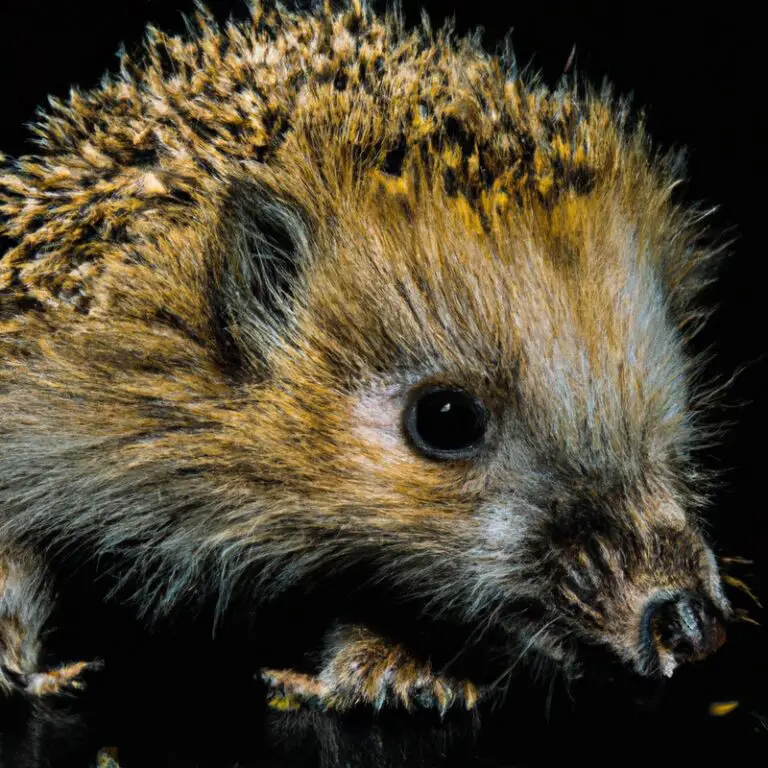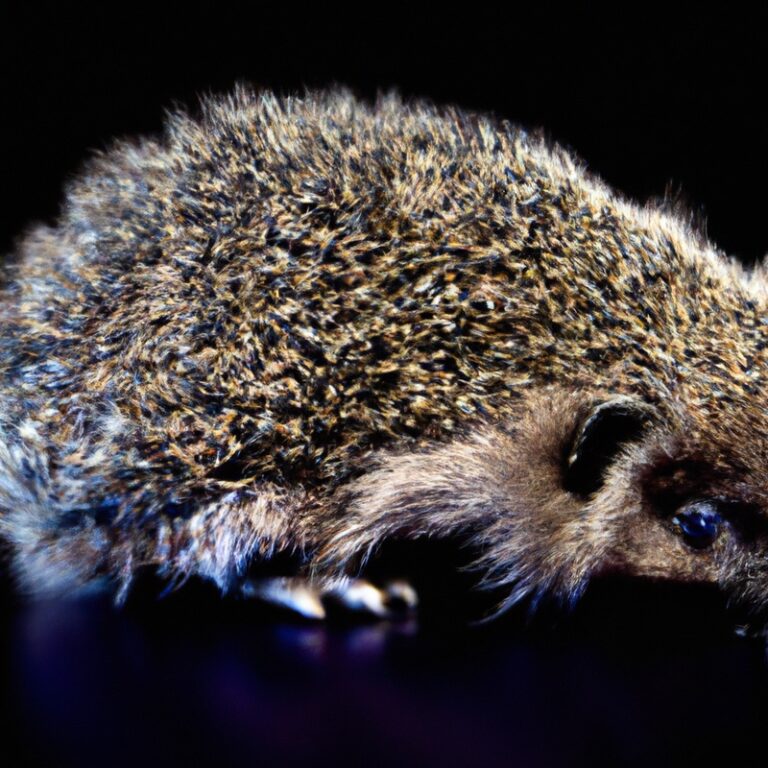What Is The Hedgehog’s Role In Pest Control For Farmers?
Key Takeaways:
- Hedgehogs play a crucial role in pest control for farmers by consuming harmful insects and small rodents.
- By having hedgehogs on farms, farmers can reduce the need for chemical pesticides.
- Hedgehogs are natural predators of pests, helping to maintain a balanced ecosystem on farmland.
- Encouraging hedgehog habitats can be an effective and sustainable pest control strategy for farmers.
Are you tired of battling pests in your agricultural fields? Well, have you ever considered enlisting the help of the humble hedgehog?
That’s right, these adorable little creatures may just be the secret weapon farmers have been searching for in their pest control efforts.
In this blog, we’ll explore the fascinating role that hedgehogs play in keeping pesky critters at bay and protecting crops. From understanding their natural hunting behavior to creating a hedgehog-friendly environment, we’ll delve into the practical steps you can take to harness the power of these spiky allies.
So, let’s dive in and discover how these pint-sized heroes can help you in your agricultural endeavors!
| Hedgehog’s Role in Pest Control for Farmers |
| Pros |
| Cons |
| 1. Natural pest control method |
| 1. May consume beneficial insects |
| 2. Eats pests like slugs, snails, and insects |
| 2. Has limited range and may not cover large areas |
| 3. Can be an eco-friendly alternative to chemical pest control |
| 3. May disturb root systems or plants while foraging |
| 4. Does not harm other wildlife or damage the environment |
| 4. Requires suitable habitat and shelter for hedgehogs |
Understanding the Hedgehog’s Role in Pest Control for Farmers
Hedgehogs play a vital role in pest control for farmers, helping to naturally manage populations of insects and other pests.
What Are Hedgehogs?
Hedgehogs are small, spiky mammals that are native to Europe, Asia, and Africa.
They are known for their protective spines and nocturnal habits.
Hedgehogs primarily eat insects, slugs, snails, and other small invertebrates, making them valuable allies in pest control for farmers.
These adorable creatures are also adept at hunting and consuming pests in gardens, helping to keep populations in check naturally.
With their insectivorous diet and ability to navigate through tight spaces, hedgehogs play an important role in balancing ecosystems and reducing pest infestations.
The Benefits of Hedgehogs in Pest Control
Hedgehogs play a valuable role in pest control for farmers. They help keep pest populations, such as slugs, snails, and insects, in check.
Hedgehogs are natural predators that feed on these pests, making them an eco-friendly and sustainable pest management option.
By allowing hedgehogs to inhabit farm areas, farmers can reduce reliance on chemical pesticides and promote a more balanced ecosystem. This can lead to healthier crops and a more natural approach to pest control.

Common Pests in Agricultural Settings
Common pests in agricultural settings can cause significant damage to crops. Farmers often face challenges in managing these pests effectively.
Pest Infestations and Crop Damage
Pest infestations can wreak havoc on agricultural crops.
These pests, such as insects, rodents, and birds, feed on plants, damage leaves, stems, and fruits, and can even carry diseases.
The damage caused by these pests can result in reduced yields, poor crop quality, and financial losses for farmers.
It is essential for farmers to identify and address pest infestations promptly to prevent further crop damage and protect their livelihoods.
Various pest management techniques, including the use of pesticides, crop rotation, and biological control, can help minimize pest populations and mitigate crop damage.

The Challenges Faced by Farmers
Farming comes with its fair share of challenges.
One major challenge faced by farmers is unpredictable weather patterns, which can lead to droughts, floods, or other extreme conditions that can damage crops and livestock.
Another challenge is the increasing cost of inputs such as seeds, fertilizers, and machinery, which can strain farmers’ budgets.
Additionally, pests and diseases can wreak havoc on crops, requiring farmers to invest time and resources in pest control measures.
Finally, market volatility and fluctuating prices can make it difficult for farmers to plan and manage their income.
These challenges highlight the resilience and resourcefulness that farmers need to overcome obstacles and succeed in their livelihoods.
Hedgehogs as Natural Predators
Hedgehogs play a vital role as natural predators in pest control.
Hedgehogs’ Diet and Hunting Behavior
Hedgehogs’ Diet and Hunting Behavior
- Hedgehogs are omnivores, meaning they eat both plant matter and small animal prey.
- Their diet consists of insects, worms, slugs, snails, mice, frogs, and even birds’ eggs.
- When hunting, hedgehogs use their excellent sense of smell to locate food.
- They rely on their sharp teeth and strong jaws to catch and consume their prey.
- Hedgehogs are primarily nocturnal, and their hunting behavior is most active during the night.
- They are masters of camouflage and rely on their spiky spines for protection when threatened.
The Impact of Hedgehogs on Pest Populations
Hedgehogs play a significant role in controlling pest populations.
They have a voracious appetite for insects, slugs, and snails, which are common pests in agricultural fields and gardens.
By consuming these pests, hedgehogs help keep their populations in check naturally.
This can reduce the need for chemical pesticides, making hedgehogs a valuable ally for farmers and gardeners.
Additionally, hedgehogs are nocturnal creatures, so they actively hunt pests during the night when these creatures are most active.
Their natural foraging behavior helps maintain a healthy balance in ecosystems, benefiting both humans and the environment.
Creating a Hedgehog-Friendly Environment
To create a hedgehog-friendly environment, you can focus on providing shelter and protection for hedgehogs and creating hedgehog highways and corridors.
Providing Shelter and Protection for Hedgehogs
Hedgehogs need adequate shelters to protect them from harsh weather and predators. You can provide shelter by creating a cozy space with a pile of logs, leaves, or even a hedgehog house.
Avoid using pesticides or chemicals in your garden to protect them from harmful effects.
Create small holes in your fences to allow easy hedgehog movement. Avoid harmful substances like slug pellets.
By doing these simple things, you can ensure a safe and inviting environment for hedgehogs.
Creating Hedgehog Highways and Corridors
Creating Hedgehog Highways and Corridors is an essential way to help these small creatures navigate through urban landscapes and increase their population. To create hedgehog highways, simply create small holes or gaps in fences and boundaries.
Connecting your garden with your neighbor’s or surrounding green spaces can also create a network of safe corridors for hedgehogs to travel through.
By doing this, you’re providing them with the opportunity to find food, shelter, and mates, all while improving biodiversity in your area.
Attracting Hedgehogs to Farms and Gardens
To attract hedgehogs to farms and gardens, focus on providing food sources and creating suitable habitats.
Food Sources for Hedgehogs
Hedgehogs are omnivorous creatures, which means they eat both plant-based and animal-based foods. Some common food sources for hedgehogs include insects, slugs, snails, earthworms, beetles, and caterpillars.
They also consume fruits, berries, and even small mammals or birds if given the opportunity.
It’s important to provide a varied diet to hedgehogs in order to ensure their nutritional needs are met. You can attract them to your garden by leaving out food such as meat-based cat or dog food, mealworms, or hedgehog-specific food available at pet stores.
Creating Suitable Habitats
Creating suitable habitats for hedgehogs is important for their survival and to attract them to farms and gardens.
Here are some simple steps you can take:
- Provide shelter: Hedgehogs need safe places to nest and hibernate. Create hedgehog houses or piles of leaves and logs for them to hide in.
- Water source: Ensure there is a fresh water supply for hedgehogs to drink from. A shallow dish of water will suffice.
- Avoid pesticides: Chemicals used in pesticides can be harmful to hedgehogs. Try using natural methods to control pests instead.
- Food availability: Hedgehogs mainly eat insects, so having a diverse range of plants and flowers in your garden will attract their prey.
- Safe passage: Hedgehogs have a tendency to roam, so provide gaps in fences or build hedgehog-friendly gates to allow them to freely move around.
By creating suitable habitats for hedgehogs, you can help their population thrive while also benefiting from their natural pest control abilities.
Potential Drawbacks and Considerations
Potential Damage to Crops by Hedgehogs: While hedgehogs can help control pests, they may also cause damage to crops if populations are too high or if suitable habitats are limited. Balancing Hedgehog Conservation and Farming Goals: Farmers should consider finding a balance between hedgehog conservation efforts and their farming goals to minimize potential conflicts and ensure sustainable pest control.
Potential Damage to Crops by Hedgehogs
Hedgehogs, despite their beneficial role in pest control, can also cause potential damage to crops. Here are a few factors to consider:
- Foraging behavior: Hedgehogs have a tendency to dig and root around for food, which can result in damage to the root systems of crops.
- Nest building: Hedgehogs often build nests in grassy or bushy areas near crops. These nests can sometimes disturb the growth of crops or even trample them.
- Feeding habits: While hedgehogs primarily eat insects, they may also consume crops such as strawberries, melons, or other ripe fruits if available. This can lead to losses for farmers.
To mitigate any potential damage, it can be helpful to implement certain preventive measures such as using fencing or netting to protect crops, creating alternative habitats away from fields, or using deterrents that are non-harmful to hedgehogs.
Balancing Hedgehog Conservation and Farming Goals
Balancing hedgehog conservation and farming goals can be a challenge, but it is not impossible.
One way to achieve this balance is by creating hedgehog-friendly habitats on farms.
This can be done by leaving patches of land undisturbed to provide shelter and food for hedgehogs.
Additionally, farmers can use environmentally-friendly farming practices that minimize the use of pesticides, as these can harm hedgehogs and their prey.
It is important to find a middle ground where both the needs of farmers and the conservation of hedgehogs can be met.
Encouraging Hedgehog Populations and Conservation Efforts
To encourage hedgehog populations and conservation efforts, it is important to engage in hedgehog research and monitoring and collaborate with local conservation organizations.
Engaging in Hedgehog Research and Monitoring
Engaging in hedgehog research and monitoring is vital for understanding and protecting these adorable creatures.
Researchers collect data on hedgehog populations, behavior, and habitat to gain valuable insights.
Monitoring involves setting up camera traps, recording sightings, and studying their diet.
This helps identify any threats or changes in their environment and allows researchers to develop conservation strategies.
With continued research and monitoring efforts, we can ensure the long-term survival of hedgehog populations and promote their well-being.
Collaboration with Local Conservation Organizations
Collaborating with local conservation organizations is a key strategy for hedgehog conservation and population management.
These organizations have the expertise and resources to support habitat restoration, implement conservation programs, and raise awareness about the importance of hedgehogs.
By partnering with them, farmers can access valuable guidance and assistance in creating hedgehog-friendly landscapes, mitigating threats, and monitoring populations.
This collaboration ensures a coordinated effort to protect hedgehogs and their vital role in our ecosystem.
Frequently Asked Questions (FAQs)
Are hedgehogs effective in controlling specific pests?
Hedgehogs are indeed effective in controlling specific pests in farming areas. They have a natural diet that includes insects, slugs, snails, and even small rodents.
Hedgehogs can help farmers by consuming these pests and reducing their population.
With their sharp spines and ability to dig, hedgehogs are skilled at hunting and capturing pests that can damage crops. By introducing hedgehogs to their fields, farmers can benefit from their natural pest control abilities and reduce the need for chemical pesticides.
How do farmers attract hedgehogs to their farms?
Farmers can attract hedgehogs to their farms by creating a welcoming environment.
This includes providing shelter in the form of hedgehog houses or piles of logs.
Farmers can also leave areas of their fields or gardens untidy to give hedgehogs a place to forage for insects.
Avoiding the use of pesticides can also help attract hedgehogs, as they rely on insects for food.
By implementing these measures, farmers can encourage hedgehogs to visit their farms and assist in pest control.
Can hedgehogs cause damage to crops?
Hedgehogs generally do not cause significant damage to crops. They primarily feed on insects, slugs, and snails, which can be beneficial as they help control pests that harm crops.
However, it is possible for hedgehogs to accidentally trample plants or disturb the soil when foraging.
To minimize any potential harm, farmers can create designated areas for hedgehogs to encourage them to stay away from cultivated crops.
Final Verdict
Hedgehogs play a valuable role in pest control for farmers.
These nocturnal creatures have a natural appetite for many common pests, including slugs, snails, and insects that can cause significant damage to crops.
By creating hedgehog-friendly environments, such as providing shelter and food sources, farmers can attract these natural predators to their farms and gardens.
While there may be some potential drawbacks and considerations, such as the possibility of hedgehogs damaging crops, with careful management and collaboration between conservation efforts and farming goals, hedgehog populations can be encouraged and their pest control benefits maximized.
By engaging in research, monitoring, and collaboration with local conservation organizations, farmers can contribute to the conservation and well-being of hedgehogs while benefiting from their pest control abilities.

